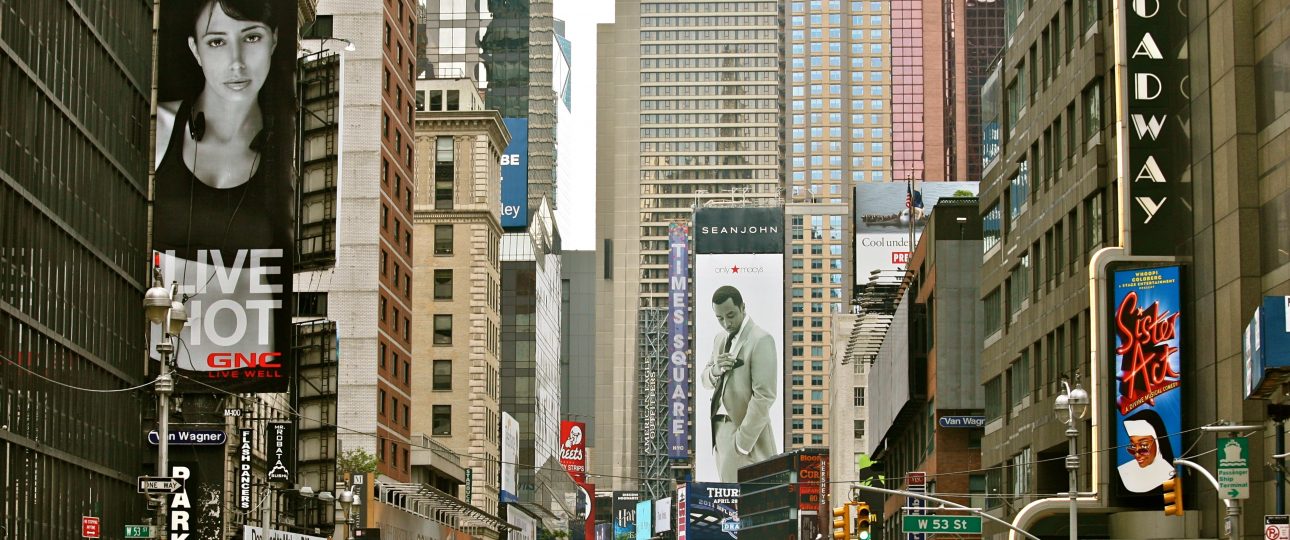Exploring Broadway: A Journey Through New York’s Theatrical Heart
Broadway is more than just a street; it’s a symbol of the American theatrical industry. Located in New York City, Broadway runs from Battery Place in Lower Manhattan, stretching north through the Bronx and into Westchester County. This historic thoroughfare has evolved from a Native American trail into a bustling avenue synonymous with world-class theater.
The Historical Significance of Broadway
Broadway’s origins trace back to the Wickquasgeck trail, a path carved by Native Americans through Manhattan. When the Dutch arrived, they widened it, and it became the main road through New Amsterdam. Known as Heeren Wegh or “Gentlemen’s Way,” it was later renamed “Broadway” by the British due to its width. By the 18th century, Broadway was a key route in New York City, ending at the town commons north of Wall Street.
The transformation of Broadway into a theater district began in earnest with the opening of the Park Theatre in 1798. Over time, the area became a hub for performing arts, with iconic venues like the Shubert Theatre and the Palace Theatre emerging. Today, Broadway is a metonym for the American commercial theatrical industry, drawing millions of visitors annually.
What Sets Broadway Apart?
Variety of Shows
Broadway offers an extensive range of performances. From long-running musicals like “The Phantom of the Opera” to contemporary hits like “Hamilton,” there’s a diverse selection of shows. Whether you prefer musicals, dramas, or comedies, Broadway’s lineup is ever-evolving and caters to a wide array of tastes.
Star Power
Broadway is a magnet for talent. Many renowned actors, singers, and dancers grace its stages, often including Hollywood celebrities. This star power adds an extra layer of excitement to the theater experience, making each performance a unique event.
Intimate Theater Experience
Unlike large venues, Broadway theaters offer a more intimate setting. The ornate interiors and excellent acoustics create an immersive environment, allowing audiences to connect deeply with the performances. This closeness enhances the storytelling, making each show a memorable experience.
Optimal Times to Visit Broadway
Spring and Fall
Visiting Broadway in spring (March to May) or fall (September to November) is ideal. The weather is pleasant, and the city buzzes with cultural events. These seasons often see the debut of new shows, providing fresh experiences for theatergoers.
Weekdays
For a more relaxed experience, consider attending shows on weekdays. Weekends are typically busier, with larger crowds. Weekday performances often offer better seat availability and a more laid-back atmosphere.
Getting to Broadway
By Air
For those traveling from afar, New York City’s airports—John F. Kennedy International (JFK) and LaGuardia (LGA)—are convenient entry points. From there, taxis, ride-shares, or public transit can take you to the theater district.
By Train
Amtrak services Penn Station in Midtown Manhattan, a major hub connecting various U.S. cities. From Penn Station, Broadway is easily accessible by foot or a short taxi ride.
By Subway
New York City’s subway system is efficient and cost-effective. Several lines serve the theater district, with stations like Times Square-42nd Street providing easy access to Broadway.
Getting Around Broadway
Walking
The compact nature of the theater district makes walking the best way to explore. The proximity of theaters allows for leisurely strolls between shows, offering a chance to soak in the vibrant atmosphere.
Taxis and Rideshare Services
For those who prefer not to walk, taxis and rideshare services like Uber and Lyft are readily available. These options are convenient for quick trips around the city.
Public Transportation
The subway is not only useful for reaching Broadway but also for exploring other parts of New York City. A MetroCard provides access to the extensive subway network, while buses offer above-ground travel options.
With its rich history and vibrant theater scene, Broadway remains a cornerstone of New York City’s cultural landscape. Whether you’re a seasoned theatergoer or a first-time visitor, Broadway offers an experience that is both unique and unforgettable.




